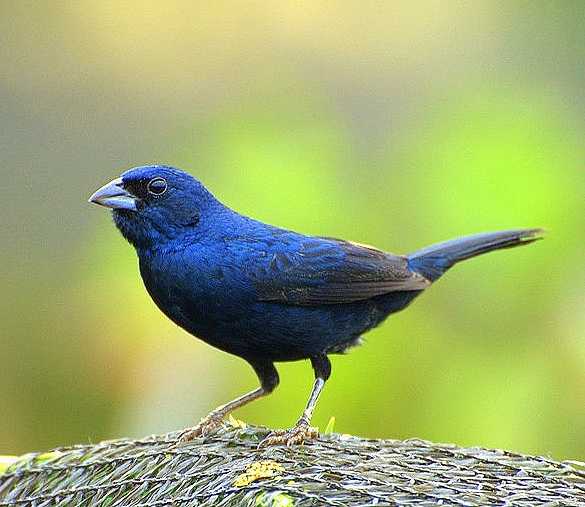 |
| Photo by Dario Sanches (Wikipedia) |
Common name:
blue-black grassquit (en); tiziu (pt); jacarini noir (fr); negrito chirrí (es); jacarini (de)
Taxonomy:
Order Passeriformes
Family Emberizidae
Range:
This species is found from Mexico down to southern Peru and northern Argentina.
Size:
These birds are 10-11,5 cm long and weigh 9-10 g.
Habitat:
The blue-black grassquit is found in grasslands, scrublands and dry savannas, and also in arable land, pastures and within urban areas.
Diet:
They mainly feed on grass seeds, but will also take some insects and berries.
Breeding:
The blue-black grassquit can breed all year round. The nest is a deep cup made of plant fibres, placed among grasses tufts or in a low scrub. There the female lays 1-3 greenish or bluish-white eggs with reddish-brown spots, which are incubated by both parents for 9-13 days. The chicks fledge 10-13 days after hatching.
Conservation:
IUCN status – LC (Least Concern)
This species has an extremely large breeding range and the global population is estimated at 50-100 million individuals. The population is suspected to be stable in the absence of evidence for any declines or substantial threats.







